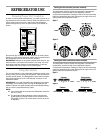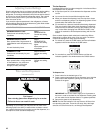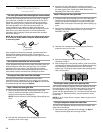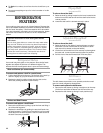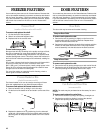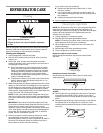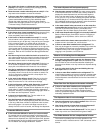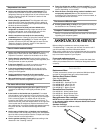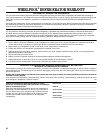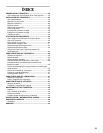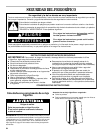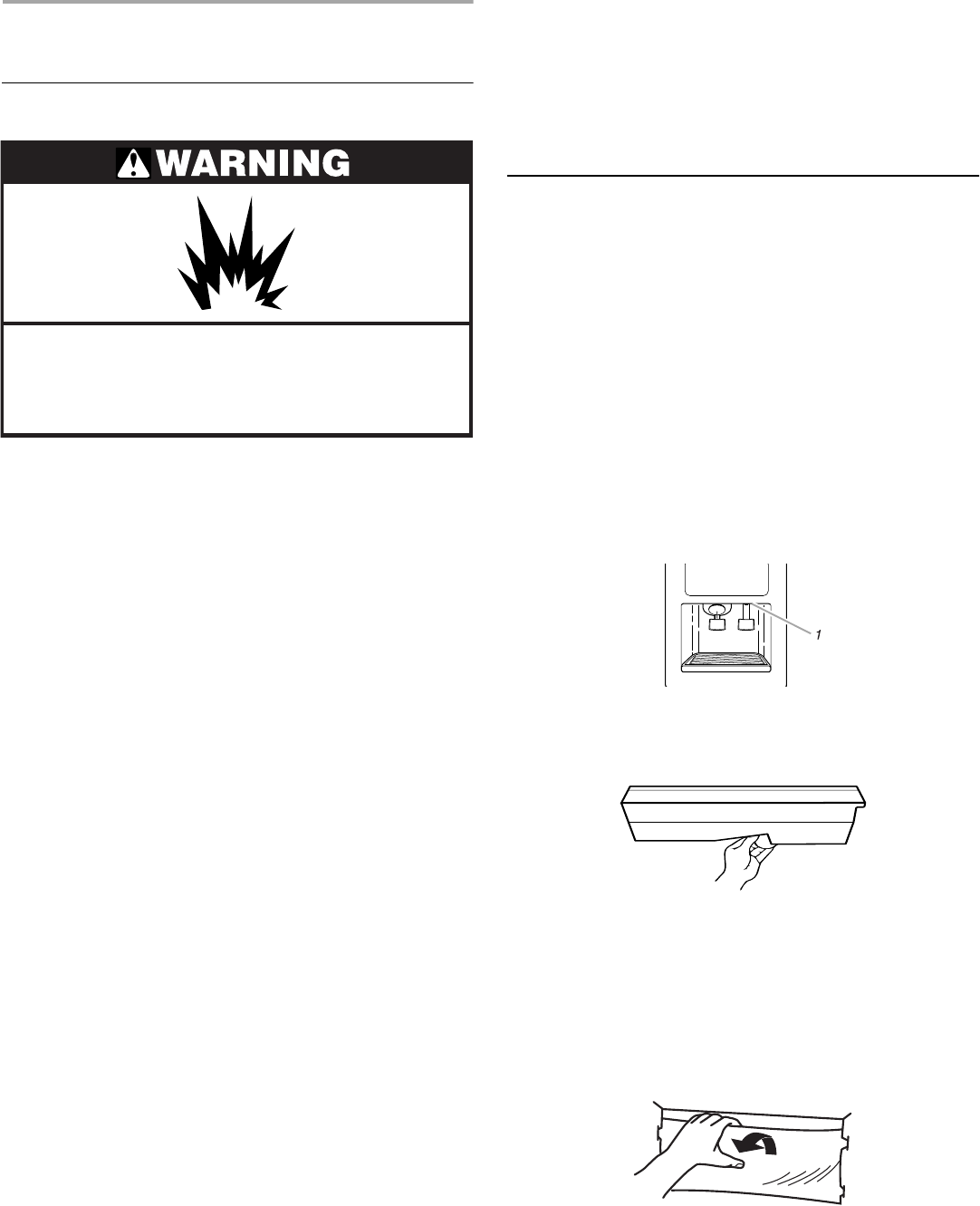
17
REFRIGERATOR CARE
Cleaning
Both the refrigerator and freezer sections defrost automatically.
However, clean both sections about once a month to prevent
odors from building up. Wipe up spills immediately.
Cleaning your refrigerator
1.
Unplug refrigerator or disconnect power.
2.
Remove all removable parts from inside, such as shelves,
crispers, etc.
3.
Hand wash, rinse, and dry removable parts and interior
surfaces thoroughly. Use a clean sponge or soft cloth and a
mild detergent in warm water.
■
Do not use abrasive or harsh cleaners such as window
sprays, scouring cleansers, flammable fluids, cleaning
waxes, concentrated detergents, bleaches or cleansers
containing petroleum products on plastic parts, interior
and door liners or gaskets. Do not use paper towels,
scouring pads, or other harsh cleaning tools. These can
scratch or damage materials.
■ To help remove odors, you can wash interior walls with a
mixture of warm water and baking soda (2 tbs. to 1 qt.
[26 g to .95 L] of water).
4.
Wash stainless steel and painted metal exteriors with a clean
sponge or soft cloth and a mild detergent in warm water. Do
not use abrasive or harsh cleaners. Dry thoroughly with a soft
cloth. For additional protection against damage to painted
metal exteriors, apply appliance wax (or auto paste wax) with
a clean, soft cloth. Do not wax plastic parts.
NOTE:
To keep your Stainless Steel refrigerator looking like
new and to remove minor scuffs or marks, it is suggested that
you use the manufacturer’s approved Stainless Steel Cleaner
& Polish.
IMPORTANT:
This cleaner is for Stainless Steel parts only!
Do not allow the Stainless Steel Cleaner & Polish to come into
contact with any plastic parts such as the trim pieces,
dispenser covers or door gaskets. If accidental contact does
occur, clean plastic part with a sponge and mild detergent in
warm water. Dry thoroughly with a soft cloth. To order the
cleaner, see the “Accessories” section.
5.
There is no need for routine condenser cleaning in normal
home operating environments. If the environment is
particularly greasy or dusty, or there is significant pet traffic in
the home, the condenser should be cleaned every two to
three months to ensure maximum efficiency.
If you need to clean the condenser:
■ Remove the base grille (see “Base Grille” or “Door
Removal” section).
■
Use a vacuum with a soft brush to clean the grille, the
open areas behind the grille and the front surface area of
the condenser.
■ Replace the base grille when finished.
6.
Plug in refrigerator or reconnect power.
Changing the Light Bulbs
NOTE:
Not all appliance bulbs will fit your refrigerator. Be sure to
replace the bulb with one of the same size and shape. The
dispenser light requires a heavy duty 10-watt bulb. All other lights
require a 40-watt appliance bulb. Replacement bulbs are
available from your dealer.
1.
Unplug refrigerator or disconnect power.
2.
Remove light shield when applicable as shown.
NOTE:
To clean the light shield, wash it with warm water and
liquid detergent. Rinse and dry the shield well.
3.
Remove light bulb and replace with one of the same size,
shape and wattage.
4.
Replace light shield when applicable as shown.
5.
Plug in refrigerator or reconnect power.
Dispenser Light (on some models)
Reach through the dispenser area to remove and replace
light bulb.
1. Dispenser Light
Refrigerator Control Panel Light
Reach behind the refrigerator control panel to remove and
replace light bulb.
Refrigerator Crisper Light or Upper Freezer Light (on some
models)
■
Remove light shield by grasping the top center of the shield
and pulling forward while turning it slightly to one side. If
necessary, remove top crisper drawer to access crisper light
shield.
■
Replace the light shield by inserting the tabs on one end into
the slotted holes in the refrigerator or freezer liner. Then,
carefully bend the shield at the center to insert the tabs on the
other end.
Explosion Hazard
Use nonflammable cleaner.
Failure to do so can result in death, explosion,
or fire.



